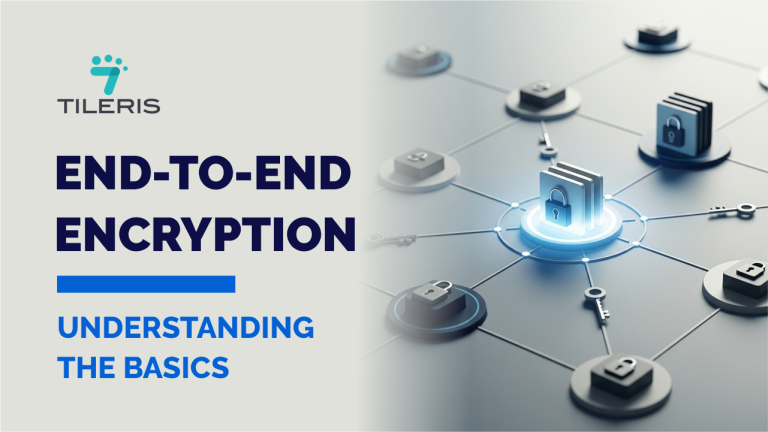Employee Training Guide: Preventing Business Email Compromise
Introduction
Imagine this: a super convincing email, seemingly from the boss, lands in an employee’s inbox asking for an urgent money transfer. One quick click, one swift action, and suddenly, thousands, or even millions, of your company’s funds are gone. This isn’t science fiction; it’s a Business Email Compromise (BEC) attack, hitting businesses harder than ever.
While fancy tech is great, the truth is, your team members are often the very last line of defense. That’s why top-notch employee training isn’t just a good idea for stopping BEC, it’s vital. This guide is all about giving you the roadmap to empower your team, turning them into sharp-eyed BEC blockers.
What Exactly IS a BEC Attack? (And How Do They Trick Us?)
BEC attacks are the ultimate digital con artistry. They don’t usually involve nasty viruses or clickable links (though some do!). Instead, they play on trust and urgency. Think of it like a master impersonator calling your house pretending to be a family member in distress.
How does a BEC scam work?
- The Master of Disguise: BEC attackers pretend to be someone important, someone you trust, your CEO, a key supplier, your lawyer, or even a colleague. They’ll send emails that look exactly like they came from the real person.
- The Big Ask: Once they’ve got your trust, they ask for something big. Usually, it’s money (like a wire transfer) or super sensitive info (like employee tax forms).
Common tricks used by BEC Attackers:
The Boss Needs Money NOW!” (CEO Fraud): This is where someone pretends to be a top executive (like your CEO or CFO) who’s “traveling” or in a “confidential meeting.” They’ll email an employee, often in finance, demanding an immediate, secret wire transfer for a “confidential deal.”
- Imagine this email: “Subject: Urgent Wire Transfer – Project Alpha. I need you to send $50,000 to this new account immediately for a confidential acquisition. No delays!” click link for real FBI testimony
“We’ve Changed Our Bank!” (Vendor Impersonation): This is super common. Scammers pretend to be one of your regular suppliers, sending an email saying their bank details have changed. The next time you pay an invoice, your money goes straight into the scammer’s pocket.
- Imagine this email: “Subject: Important Payment Update – [Your Vendor’s Name]. Please note our new bank account number. All future payments should go here.”
“Overdue Invoice!” (Invoice Scams): They might impersonate a law firm or a new supplier you’ve never used, sending a fake invoice for services that never happened.
- Imagine this email: “Subject: Final Notice: Overdue Payment for Consulting Services.”
“Send Me Employee Data!” (W-2 Scams): Here, scammers pretend to be an executive asking HR or payroll for confidential employee tax forms (W-2s). They then use this info for identity theft or tax fraud.
When a Real Account is Taken Over: Sometimes, attackers hack into a real company email account. Then, they use that genuine account to send out fake emails, making it incredibly hard to spot the scam.
Impact of BEC attacks
- Lost Money: Often, once the money is wired, it’s gone for good.
- Damaged Reputation: Your customers and partners lose trust.
- Legal Nightmares: Fines, lawsuits, and regulatory penalties.
- Business Chaos: Operations can grind to a halt during an investigation.
Becoming a BEC Detective: Key Training Points
Your team needs to be like digital detectives. Here’s what to focus on in their training:
- Learn to Smell a Rat (Recognizing Suspicious Emails):
- Emotional Red Flags: Does the email demand super-fast action? Is it trying to scare you (“act now or else!”) or push you to secrecy (“don’t tell anyone about this transfer”)? Scammers love to play with emotions.
- “Something’s Off” Feeling: Does the request seem out of character for the sender? Is the timing weird (like the CEO asking for a wire transfer while on a remote vacation)?
- Awkward Language: Even sophisticated scammers can slip up. Look for weird grammar, misspellings, or a slightly “off” tone that doesn’t sound like the real person.
- Double-Check That “From” Line (Verifying Sender Identities): This is HUGE for BEC!
- Don’t Trust the Display Name: Just because it says “CEO Jane Doe” doesn’t mean it’s Jane. Always, always look at the actual email address (often in < > brackets). Is it janedoe@yourcompany.com or janedoe@company-updates.net? That tiny difference matters!
- The Golden Rule: Verify Out-of-Band: If any email asks for money, sensitive info, or a change in payment details, DO NOT REPLY TO THE EMAIL. Instead, pick up the phone and call the person using a phone number you already have on file (not one from the suspicious email!), or use an internal chat system to confirm. This is your number one defense!
- Think Before You Click (Cautions with Links and Attachments): Even though BEC mostly uses social engineering, some attacks might have a fake link or an innocent-looking attachment that’s malicious.
- Hover Power: Always hover your mouse over any link to see where it goes before clicking.
- Unexpected Files? Be super careful with attachments you weren’t expecting, even if they seem to come from someone you know.
- Speak Up! (Reporting Suspicious Activity): Make it incredibly easy and safe for employees to report anything that looks even slightly fishy. No one should ever feel silly or punished for reporting a potential scam. Emphasize that reporting quickly can save the day!
Training That Sticks: Best Practices
Nobody wants boring training! Here’s how to make your BEC prevention lessons memorable and effective:
- Regular “Refreshers”: BEC scams constantly evolve. So should your training! Plan regular, maybe quarterly or twice-a-year, quick sessions to keep everyone updated on the latest tricks.
- Make it Fun & Interactive: Forget the endless PowerPoints!
- Simulations: Run fake BEC emails. See who spots them! It’s like a fire drill for cybersecurity, and a great way to learn without real risk.
- Real-Life Stories: Share (anonymized) examples of BEC attempts, maybe even ones your company experienced. It makes the threat very real.
- Short Videos & Quizzes: Keep content bite-sized and engaging.
- Tailor It: Not everyone needs the same training. Your finance team needs to know all the ins and outs of payment scams, while HR needs to be extra vigilant about W-2 fraud.
Building a “Security-First” Company Culture
Effective BEC prevention isn’t just about training, it’s about making security part of your company.
Steps to achieve this are:
- The Boss Needs to Be Onboard (Leadership Buy-in): When the top brass genuinely cares about security and actively shows it, everyone else takes it seriously. Their support sets the tone.
- Get Everyone Playing Ball (Employee Engagement): Make it easy and rewarding for employees to participate. Celebrate those who spot and report a BEC attempt!
- Always Be Learning (Continuous Improvement): The bad guys never stop trying new things. So, you can’t either! Constantly review your training and security measures based on new threats and what you learn from your simulations.
- Clear Rules, Easy to Follow: Make sure everyone knows the clear, simple steps for things like verifying money transfers or handling sensitive data.
Conclusion
Business Email Compromise attacks are a serious threat, but they’re not invincible. The most powerful tool in your arsenal? Your well-trained, alert employees. By investing in clear, engaging, and ongoing employee training, you’re not just preventing cyber disasters; you’re building a fortress of trust and security around your entire business. Empower your team, and they’ll become your fiercest protectors.
Ready to make your team BEC-proof? Start implementing a strong training program today!
For more deep dives into cybersecurity or for advanced solutions, always check out our website at https://tileris.com.







